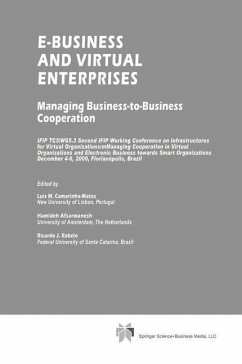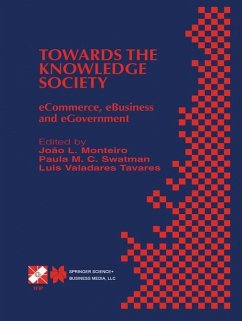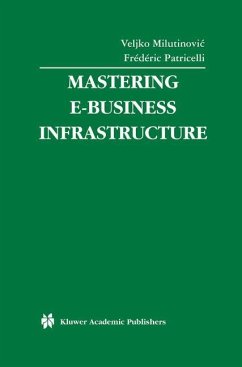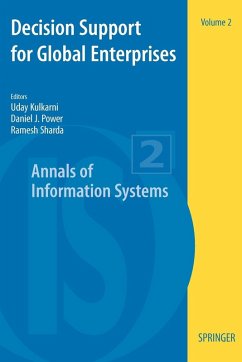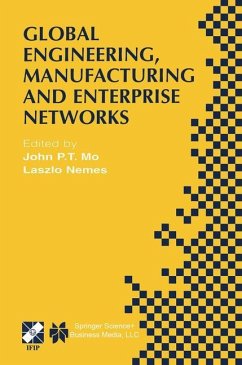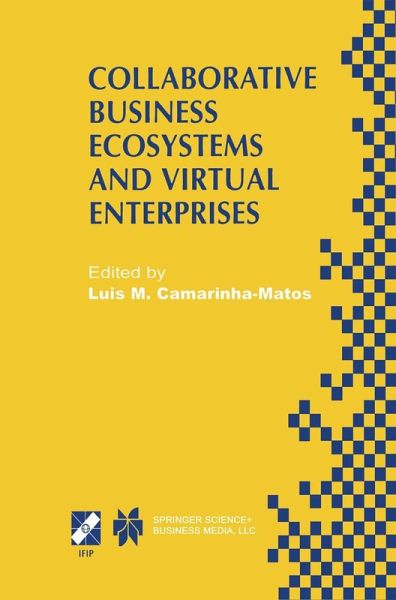
Collaborative Business Ecosystems and Virtual Enterprises
IFIP TC5 / WG5.5 Third Working Conference on Infrastructures for Virtual Enterprises (PRO-VE'02) May 1-3, 2002, Sesimbra, Portugal
Herausgegeben: Camarinha-Matos, Luis M.

PAYBACK Punkte
57 °P sammeln!
Towards collaborative business ecosystems Last decade was fertile in the emerging of new collaboration mechanisms and forms of dynamic virtual organizations, leading to the concept of dynamic business ecosystem, which is supported (or induced ?) by the progress of the ubiquitous I pervasive computing and networking. The new technologies, collaborative business models, and organizational forms supported by networking tools "invade" all traditional businesses and organizations what requires thinking in terms of whole systems, i. e. seeing each business as part of a wider economic ecosystem and e...
Towards collaborative business ecosystems Last decade was fertile in the emerging of new collaboration mechanisms and forms of dynamic virtual organizations, leading to the concept of dynamic business ecosystem, which is supported (or induced ?) by the progress of the ubiquitous I pervasive computing and networking. The new technologies, collaborative business models, and organizational forms supported by networking tools "invade" all traditional businesses and organizations what requires thinking in terms of whole systems, i. e. seeing each business as part of a wider economic ecosystem and environment. It is also becoming evident that the agile formation of very dynamic virtual organizations depends on the existence of a proper longer-term "embedding" or "nesting" environment (e. g. regional industry cluster), in order to guarantee certain basic requirements such as trust building ("Trusting your partner" is a gradual and long process); common interoperability, ontology, and distributed collaboration infrastructures; agreed business practices (requiring substantial engineering Ire-engineering efforts); a sense of community ("we vs. the others"), and some sense of stability (when is a dynamic state or a stationary state useful). The more frequent situation is the case in which this "nesting" environment is formed by organizations located in a common region, although geography is not a major facet when cooperation is supported by computer networks.





